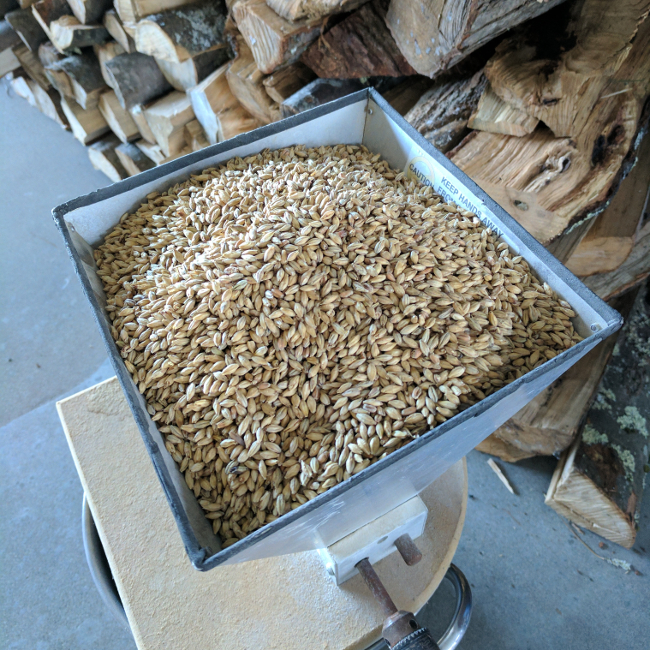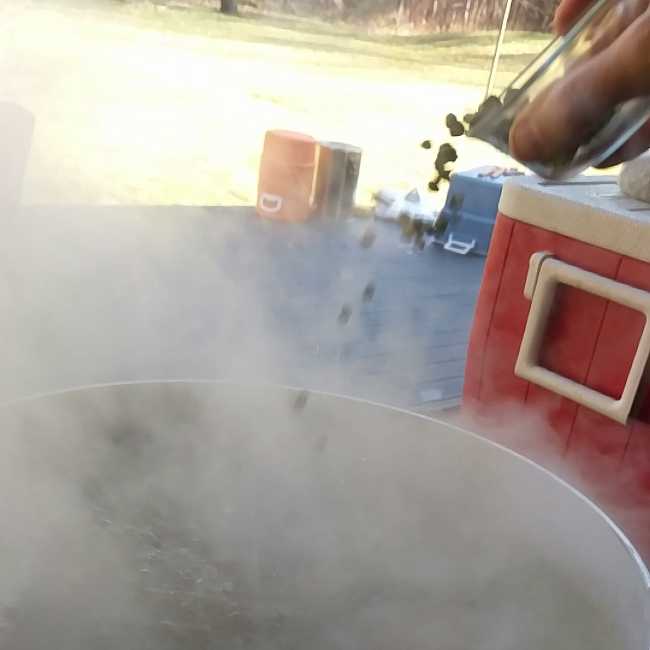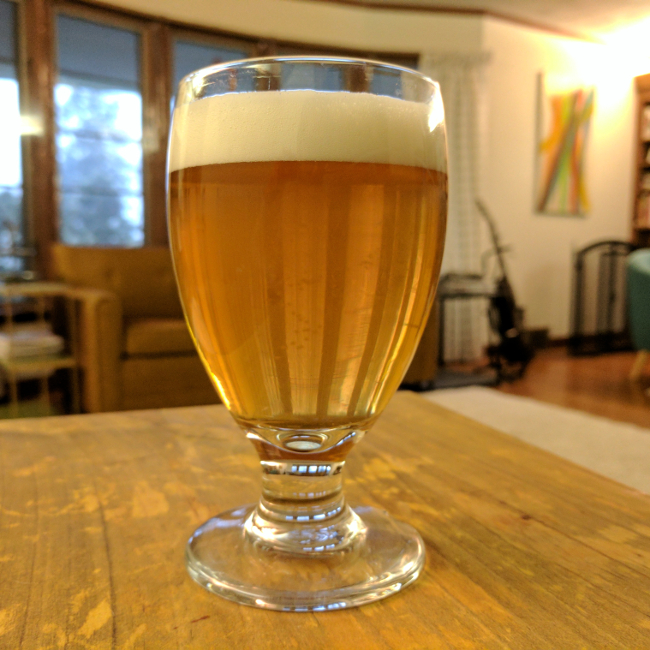Kölsch
At this temp, not even Spock wanted to join me outside.
The Kölsch, with your annoying umlaut that I'm going to stop using now, is a beer brewers beer to drink and make. It's not a hoptacular IPA or a chocolaty, roasted alcohol bomb of a Russian Imperial Stout or a mouth puckering sour from beyond the pellicle. Rather it's light and delicate whose complexities only come out when you look for them. They're on the lower end of the ABV spectrum with a touch of malt sweetness, and a subtle hoppiness that plays with the light fruitiness from the yeast esters. And if you make a mistake, you'll know it.
For this beer I used a malt specifically made in Cologne, Germany, where Kolsch beer comes from. It's from the Schill Malz company and is aptly named "Kolsch Malt". It's a touch darker than Pilsner malt, and from this it lends a bit more malty complexity to a beer than traditional Pilsner does.
Simple yet effective.
Kolsch recipe for 11 gallons:
Grains:
- 17 lbs 2 oz Schill Kolsch Malt
- 14 oz Wheat Malt
Single infusion mash at 150F for 1 hour, then add boiling water to 170F and let that sit for 15 minutes before draining and batch sparging.
Boil additions (60 minute boil):
- 0.4 oz Warrior (17% AA) @ First Wort Hopping (13 IBUs)
- 4 oz Strisselspalt (1.3% AA) @ 30 minutes
- 4 oz Strisselspalt (1.3% AA) @ 10 minutes
Fermentation Plan:
- I used WLP029 yeast for this beer because it gives off wonderful pear/apple/Riesling wine notes that are necessary for a proper Kolsch. It was fermented at 60F for 10 days before raising up to 67F for 4 days to clean up and finish. After that I cold crashed and let sit for a few weeks before kegging.
HOPS AWAY!
Brew day was brew day. You mill, you mash, you drain, you sparge, you boil, you hop, you cool, you fill, you chill, you pitch, you wait, and then you drink. So instead of going into the process, I feel like I should talk about that hop up there that most people may not be too familiar with. Strisselspalt hops are one of the few French hops. They're low alpha acid hops (though 1.3% is ridiculously low even for them) that have nice lemongrass undertones with a bit of floral sweetness to them. I feel like they meld great with the yeast characteristics of a Kolsch, and the first iteration of this beer I brewed (with Pilsner, Munich, and Wheat malt) came out darn tasty so who was I to change my hop schedule?
With all 11 gallons gone to a better place, there is one thing that concerned me with this beer that warrants changing. The hop character was a bit too floral and that came across a touch soapy to my taste buds. But it wasn't every time I had it, so it was definitely palatte dependent. I didn't get any comments about it from the dozens of others that tried this beer, though they may have just been being nice. One of the more traditional brewers at my homebrew shop, whose praise is hard to come by, would continually reach for my growler of kolsch to refill his glass with many other beers open on the table...which is about as high praise as you'll get from him. And it ended up taking 2nd in my homebrew club's Kolsch competition and 3rd in a Best of Show inter-club competition between my club and another club, so it's not like that flavor was all that offensive.
But I will still make an adjustment to the hops the next time I brew this beer (and I will be brewing it again). That change would come in the form of using half the amount of Strisselspalt and making up the difference with Saaz. I feel like upping the herbal spice notes to play off the pome fruit from the yeast, mingled with a more subdued citrus/lemony character from the Strisselspalt will make an already solid beer even better.
Didn't drop as clear as I'd like, but I loved the golden color.
Final numbers for my Kolsch:
- Batch Size: 11 gallons
- Original Gravity: 1.048
- Final Gravity: 1.009
- ABV: 5.12%
- IBU: 28



